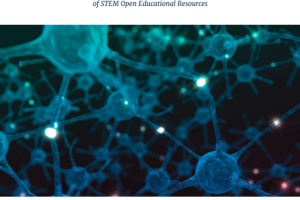STEM Accessibility: Explicitly Addressing Diversity, Equity, and Inclusion for All Learners

ISKME, in collaboration with the Science Education Resource Center at Carleton College (SERC), has just released an evaluation framework that STEM educators can use to determine the accessibility of OER based on auditory, visual, and neurological learner needs. Based on feedback from 21 STEM faculty at institutions around the U.S., and from a panel of accessibility experts, we are pleased to share the resulting guidebook entitled, STEM OER Accessibility Framework: A Practical Guide for Curators and Authors of STEM Open Educational Resources, as an outcome of a mini-grant program facilitated by Bates College and the SCORE network, and supported by the William and Flora Hewlett Foundation.
The Guidebook includes 23 criteria with a checklist, definitions, best practices and tools for applying each criterion when determining the accessibility of STEM OER. The guidebook situates STEM accessibility in the context of open educational practice, Universal Design for Learning, and Diversity, Equity and Inclusion.
The Guidebook is available as an adaptable, accessible Google document under a CC BY License.
The primary audience of this document is STEM postsecondary faculty, instructional designers, and others responsible for course design and pedagogy who seek to:
-
Expand their knowledge about accessibility and ways to integrate it into their STEM curriculum and instruction
-
Design openly licensed STEM courses and course materials that support both access and use by learners
-
Curate existing STEM content that expands upon traditional textbooks and courseware to address variability in learning
-
Identify and add meaningful keywords, or tags, to the STEM OER they create, so that their OER can be more easily discovered across platforms
In addition to being rooted in the definition of “accessible “ defined by the Office for Civil Rights (OCR), U.S. Department of Education, our work sought to broaden that definition to include the principles of equity of access and use called for in open education, as well as those described in the guidelines for Universal Design for Learning. We have emphasized this broadening using the term “OER Accessibility”. We define OER Accessibility in terms of emphasizing multiple options for learners: Accessible materials are perceivable, usable, and understandable by, and made robust for, the widest range of learner variability. These options correspond to the principles of Perceivable, Operable, Understandable, Robust in the POUR Framework, developed by W3C/WAI, and are employed in the guide to include ways that teaching and learning content might explicitly address diversity, equity, and inclusion for all learners that go beyond the legal definitions of accessibility that address disability alone.
Although STEM accessibility requirements map well to the four principles of the POUR Framework, they also bring forth additional considerations related to making data visualizations, simulations, maps, equations and formulas accessible. Ultimately, this led to the addition of a fifth principle (S for STEM, for POURS) to the resulting Framework to ensure that these unique components of Science Technology, Engineering and Math course materials are addressed.
In summary, the goal of this work was to enable STEM faculty to be able to effectively determine whether the OER they find meet their campus accessibility requirements and the needs of their learners. With this guide, faculty will be able to more effectively evaluate the accessibility of the changes they make to the OER they find—and to evaluate and improve OER that they have created themselves— before using and/or sharing.
In the long term, the goal is to provide STEM-focused educators and institutions with tools and information to facilitate effective sharing and discovery of OER both within and across their institutions, resulting in a greater body of accessibility-aligned OER as resources are continuously evaluated, tagged, and shared. This work is aimed at contributing to “closing the OER lifecycle”—to impact OER engagement from discovery, to evaluation, use and improvement, as well as elevating awareness, knowledge and skills around resource accessibility and UDL. Other groups and organizations across the education landscape may also be looking to address the gaps in learning content accessibility and designing for all learners, and we hope that the Guide and its focus on STEM OER will bring new visibility and effectiveness to this strand of open education, and to the field more broadly.




